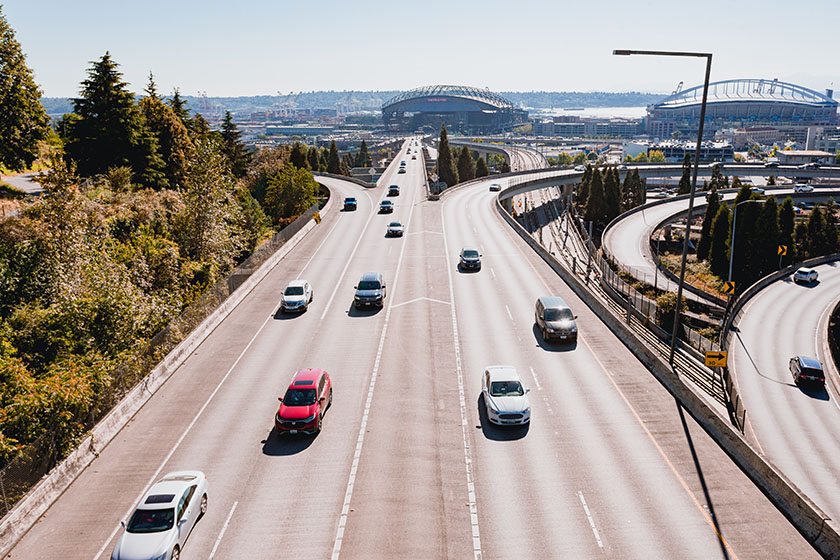Christmas driving behavior trends 2025 Read article


As COVID-19 hit the U.S. in early 2020, we experienced empty roads and a noticeable change in driving and transportation behaviors. When most states enacted shelter-in-place orders last spring, Arity’s data showed a 50% drop in total miles driven at the height of the pandemic.
What did this mean for businesses that focus on predicting driving risk?
Theoretically, fewer cars on the road in early 2020 should have meant fewer accidents, but that wasn’t necessarily the case. As it turns out, those who did get behind the wheel engaged in more dangerous behaviors like speeding, which led to the deadliest year for U.S. traffic crashes in more than a decade.
This is just one example of the type of insights that driving behavior data can provide. Understanding how driving trends are changing over time can help predict traffic patterns and inventory and staffing needs, enable strategic marketing initiatives, and more.
The shift in driving has continued to evolve in 2021 … and not in ways you might expect. As more and more people became vaccinated and people began to venture out again, you might expect trends to slowly start to swing back to our 2019 “normal,” but that’s not what’s happening. In fact, the number of miles driven hit the norm back in January 2020. Then a curious thing happened. Compared to the same period in 2019, in July 2021 people were driving even more miles than before – and they’re driving differently.
Arity looks at billions of miles of driving data from cars and smartphones and turns them into predictive insights. They paired those insights with consumer insights, gathered in February and March of 2021, around how their commuting and travel habits have changed and discovered three big driving trends:
In order to help businesses find new opportunities and solve problems across the transportation system, we published this snapshot in a new report called “Life in the fast lane”. [Update: See our 2024 driving data report, Solving the driving safety crisis.] Here are the highlights.
How is it possible that there’s less stop-and-go traffic when so many people are on the road? That brings us to our next trend: people are changing up their driving habits, which is impacting those old traditional commuter traffic patterns.
The usual morning and evening commutes dropped significantly at the height of stay-at-home-orders, with a majority of Americans reporting that they were “always or sometimes” working remotely. As restrictions lifted, mileage, across all times, rebounded at the end of 2020, including the morning and evening rush hours.
While these driving behavior insights shared thus far are a countrywide view, Arity’s data allows for granular views city to city – down to census level.
While overall mileage dropped country wide by as much as 50% during 2020 and has risen to exceed pre-pandemic levels now, some states saw different variances in miles driven. This may be attributed to the difference in the percentage of rural versus metro populations across states. People in rural areas naturally have to drive farther to access daily amenities, and people who live in cities and urban areas have different access and alternatives to driving.
Understanding driving behaviors by state and region becomes even more important if remote and hybrid models of working become the norm. People can live anywhere, which may decrease the concentration of people in the cities where the jobs are. Businesses too, may find that they are not restricted to cities where the talent is perceived to be. More people that move outside of city centers on a permanent basis can shift the driving landscape yet again.
These changes in behaviors will impact business and life as we know it whether we pay attention or not. Becoming informed and staying informed can influence business strategy and decisions and improve outcomes.
Arity recently hosted an online event with several professionals from different industries to discuss the future of mobility and data driving innovation. The topics covered smart cities and urban mobility, how driving data predicts the future, who is driving sustainability, and enhancing personalized experiences. It’s a great two-hour session, and worth a listen. One big takeaway was about how the pandemic has so fundamentally changed people’s lives, the expectation that many of these changes will stick around, and how that will influence their driving and buying habits.
For example, “We need to be thinking differently about when people are using apps,” said Gary Hallgren, President of Arity. “If you’re advertising and trying to catch people in their car, or you’re trying to predict car share demand, [as examples], you need to predict when they’re on the road.” Driving data can do that.
At the event, Mark Coffey, GM of GasBuddy, emphasized that America still has great car culture. We are still reliant on our vehicles, perhaps even more than ever during this pandemic. What has changed, and what might be a silver lining, is that people have a more flexible personal and work lives. “We have ‘teleportation’ now — just not in the way I imagined,” he said. People do not have to live around the daily morning and afternoon commute. About 80% of all driving is under 30 miles, he says, and the number of electric vehicles (EVs) on the road has doubled. But still, EVs account for only 2.5% of the 280 million cars on the road.
Will that continue to grow? That’s likely, according to the data.
Car companies are sitting up and taking notice of the more frequent shorter trips. Although people early on may have been skeptical of EVs and how far they could go without a charge, this is becoming less of a concern. Tesla represents 66% market share, Coffey noted at the event. They have a head start. But as people’s lives become more flexible and their driving habits change to shorter, more frequent trips, and the data continues to show that this is so, we’ll see more and more two-car families with one of their vehicles being an EV.
Using driving data to predict EV sales is just one example. Driving data like this can give other companies insight that will give them a head start in different areas, including building smart cities, personalizing mobile experiences, and improving urban mobility.
Arity’s multi-source dataset with more than 27 million active connections includes anonymized and aggregated driving behavior data collected through consumer mobile apps, insurance telematics and on-board device (OBD) programs.
Because the data is from multiple insurance and non-insurance sources and is not solely reflective of any Arity affiliate companies or any other particular industry or source, we really get a sense of how people are moving, where they are going, when, and how. Arity is connected to millions of U.S. drivers, so we have a credible representation in every state and demographic (e.g. families, single vehicles, rural, cities).
Keep in mind that although a majority of the trips Arity collects are personal trips, we have the capability to decipher between personal trips, gig driving, and non-driving impacts.
Because Arity collects various driving behaviors within a trip, we also can evaluate trends such as speeding, braking, acceleration, phone handling, and the time of day someone drives. For example, fueled by the largest telematics dataset tied to claims, we can more accurately predict dangerous driving behavior that we described in this report.
Contact us to learn more.